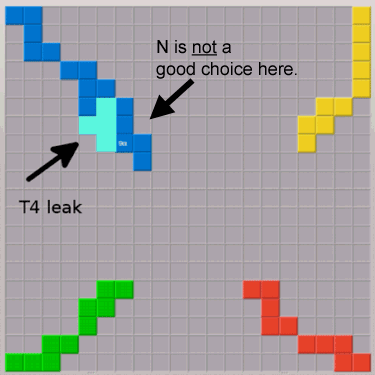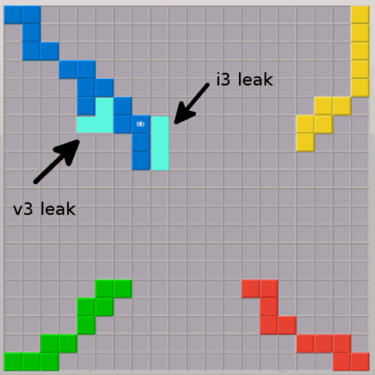
Once a piece is played, all the squares directly around it become "off limits" to that colour -- but NOT to the other colours!
Such squares are called a 'leak'. Always be aware of the leaks you are creating, and try to keep them as small as you can.

Now look at the Blue N, and notice the T4-leak here.
The N is not really a good choice at this point,
because a leak cannot really be avoided,

However, a different orientation of this N (see the picture below) creates 2 smaller leaks instead of one bigger one. It's not always favourable to create 2 small leaks instead of one bigger one, but it is in this case.
Evaluating how dangerous leaks are is a tricky concept,
but here are some guidelines:
- 1-holes and 2-holes don't count as leaks.
- v3 leaks aren't ideal, but they're not too terrible.
- i3 leaks are worse than v3 leaks but still not the end of the world.
Anything bigger than an i3 or v3 leak is much worse than just an i3 or v3 leak, unless there is some game specific reason to think otherwise.
Worst of all are leaks which are ``flexible'', meaning the opponent has multiple choices of what to play there.

Choosing a different piece creates a much better situation.
The blue W can be played to create no leaks at all as can be seen here.
On the subsequent pages we continue with the game as it was played,
including the "Leaky N".
2013-12-20